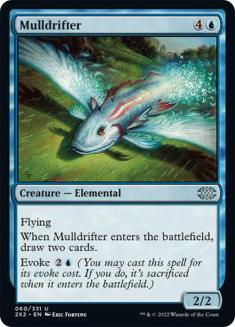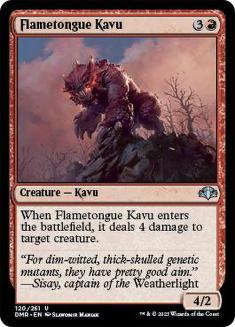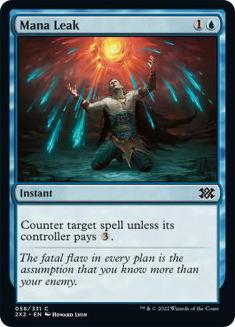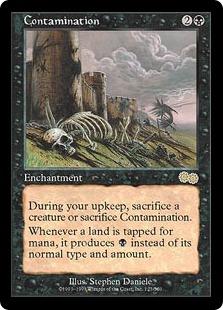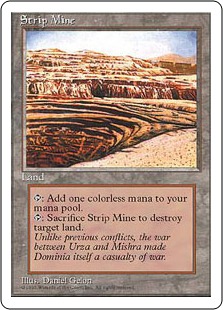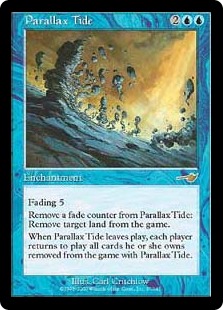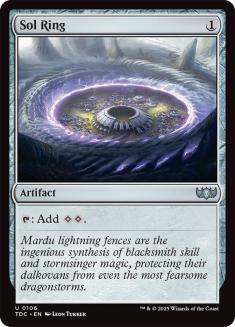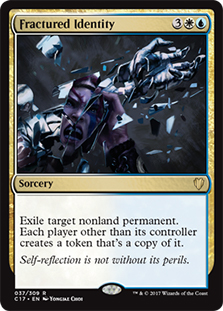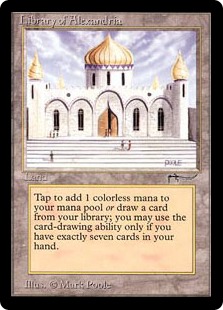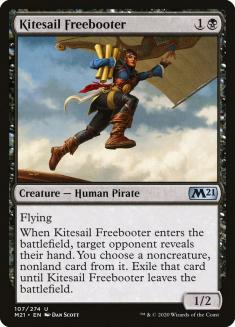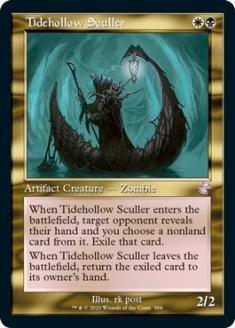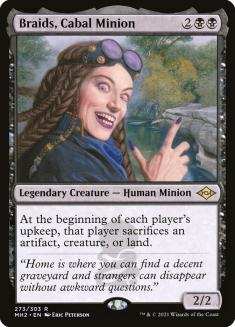The best part of Magic is “the gathering.” One of the reasons Cube is my favorite format is because it fosters a wonderful social environment. Drafting is fun with a repeated group, and Cube adds a celebratory factor. The owner of the Cube is showing their art, something they poured their heart and soul into.
As a Cube owner, I want two things: for people to have a good time, and for the people who draft my Cube to help me make it better. If something is too good, or not good enough, the only way that gets remedied is by shining a light on the card in question.
Just like many Magic players, I love breaking formats. I find joy in exploiting something others may not know yet. Cube is no different. When I update my Cube, I try to break it. When I draft a friend’s Cube, I try to break theirs. It’s the best way to demonstrate that change is needed. And this change tweaks and tunes Cube lists towards their optimum. Think of cutting cards that are too good as banning it, and upgrading cards as printing cards for the purpose of a specific format (e.g. Modern Horizons). The goal is to give the designer enough feedback to find the equilibrium they want for their Cube environment. Additionally, learning how to do this will also help win more in the Magic Online Cubes!
Don’t Draft A Supported Archetype
A Cube with supported archetypes means that the Cube owner has put time and effort towards cultivating an environment where each archetype can thrive. If the Cube is new, then it’s likely one is better than the rest, but a mature Cube will have already cleaned up the edges. The archetypes are the easiest place to provide feedback, and it’s also the place where the designer has likely put the most focus. This means that the exploits exist on a different axis from predefined archetypes.
The most common “exploit” for Cubes is “Never pass a Mulldrifter or Flametongue Kavu.” The more powerful the Cube, the less relevant this “exploit,” but any Cube that is of lower power than a classic Legacy Cube devolves into a resource war, and creatures that provide raw card advantage are the best way to win these wars.
The first thing I do when I look at a Cube is see which color-pairs have access to the most “Mulldrifter.” This was how I came to the conclusion that Dimir was far and away the best archetype in the Players’ Cube at SCG CON Winter. Part of this was the Golgari and Simic were not far behind in the number of “Mulldrifter” they had access to, so forcing Dimir with Golgari and Simic as a backup plan was the strategy I devised with Zac Hill going into the weekend. Jonathan Brostoff also agreed with this strategy, and both JBro and Zac made Top 8 by this exact exploit.
There is a high correlation with how quickly games end and how powerful a Cube is. Mulldrifter is still a fine card in Powered Cube, but nobody is winning games by tapping five mana to draw two cards like they are in Pauper Cube. Powerful Cubes must be lean, but this means there isn’t room for as many flashy cards as the average designer may want. Decks chock-full of these flashy cards also don’t tend to perform well, but they also don’t cause players to complain in the same way.
Cheap interaction is the way to go. Thoughtseize, Mana Leak, and Lightning Bolt are classic first picks in any Cube of any power level. If you draft a deck with any small number of boom-booms on the top-end and a variety of cheap interaction, it’s easy to steamroll any deck that isn’t tuned. If a Cube is about flashy top-end, the owner shouldn’t include cards like Mana Leak. And if it’s about a good and powerful environment, the unnecessary top-end needs to be shaved.
Find “The Card”
This approach has two axes: a card, or collection of cards, that is either too good for or antithetical to the design of the Cube.
Some of my favorite cards in my personal Cube are Contamination and Parallax Tide. They are difficult-to-interact-with cards that attack an opponent’s ability to cast spells for a short period of time. And, with the proper synergies, they just totally lock out the opponent from playing Magic. The people I play with enjoy having access to these kinds of effects, and don’t mind a game ending via a lock. But that’s not true for some groups. I have gotten Parallax Tide cut from more than one Cube thanks to making my opponents miserable. I think it’s a great Cube card, but the games it creates can be antithetical to the environment a Cube designer wants to cultivate.
There is a small set of cards that are too good outside of Powered Cube. Sol Ring and Library of Alexandria are classic examples, but there are others that many may include without fully understanding that they just don’t belong. Channel, Mind Twist, and Mana Drain are next on the list, followed by, in my opinion, Fractured Identity. If you believe a card belongs on this list, draft it. It’s clearly good. And show the group why it doesn’t belong.
Final Form
What do Kitesail Freebooter, Tidehollow Sculler, and Braids, Cabal Minion have to do with either of the prior sections? None of them are too unfun to play against. None of them are too powerful. Are they even “Mulldrifter” or pieces of cheap interaction?
The answer is that they are all of them, but by a small enough dosage that it goes unnoticed. And they are good cards for Cube. They aren’t too good in the abstract, and they are good by themselves. They provide both value and synergy. But one of the best decks in the MTGO Cubes used to be an Orzhov Braids deck that played as many copies of Brain Maggot as possible. It’s unintuitive because that isn’t viewed as an archetype. But that was also the lesson in the first part of this article.
When you abstract the concepts within this article and piece together collections of cards that are common in Cube that fit in these bins, it’s often possible to find something powerful and hidden, like this Orzhov deck. There are many more archetypes like this. Next time you find yourself drafting a Cube, try to find one!

